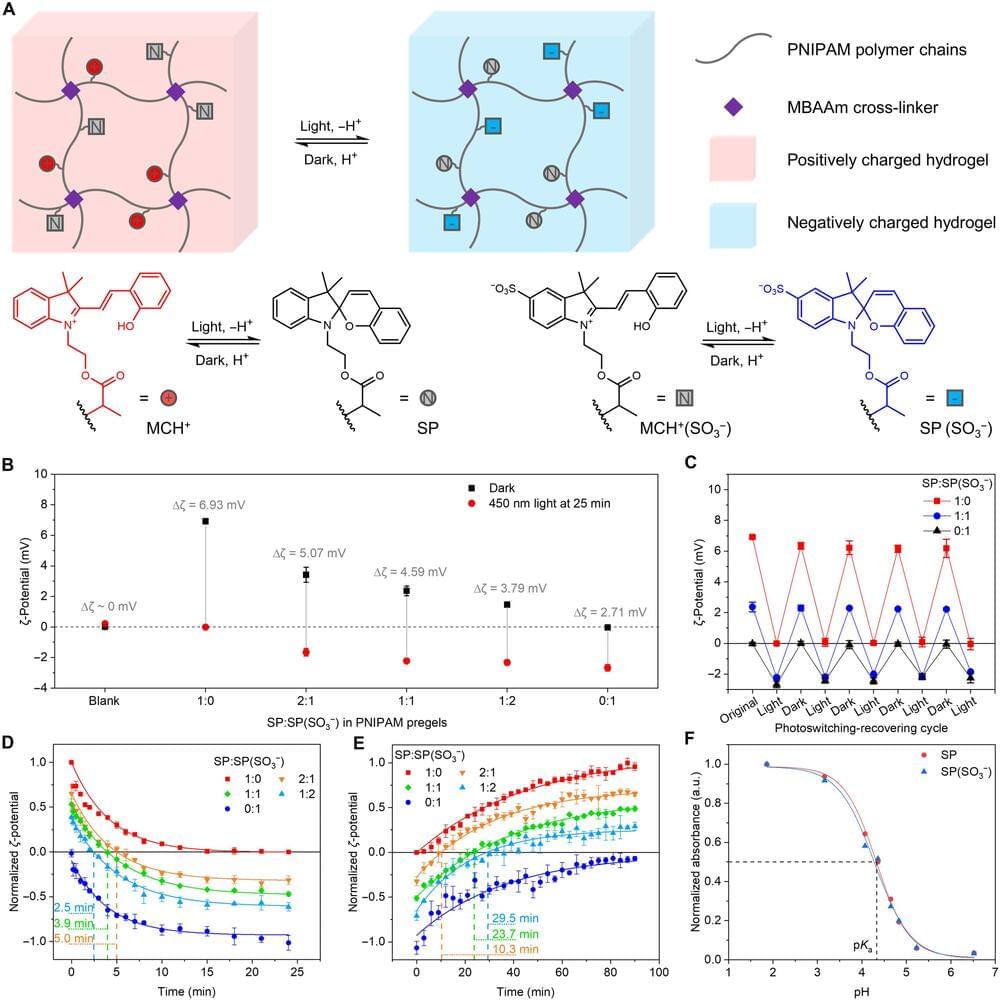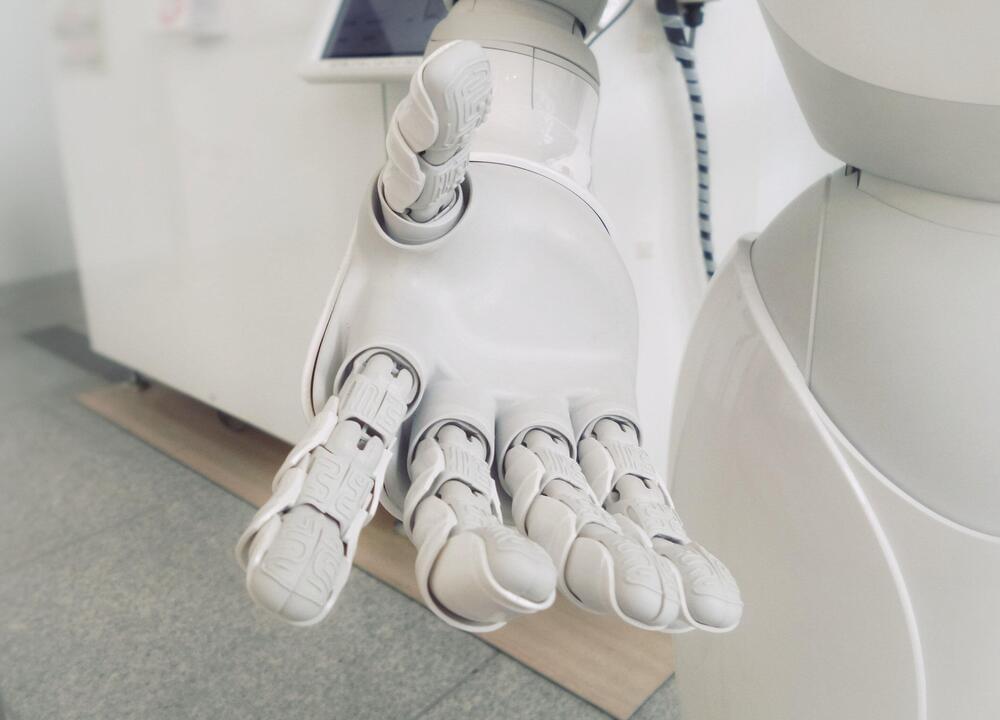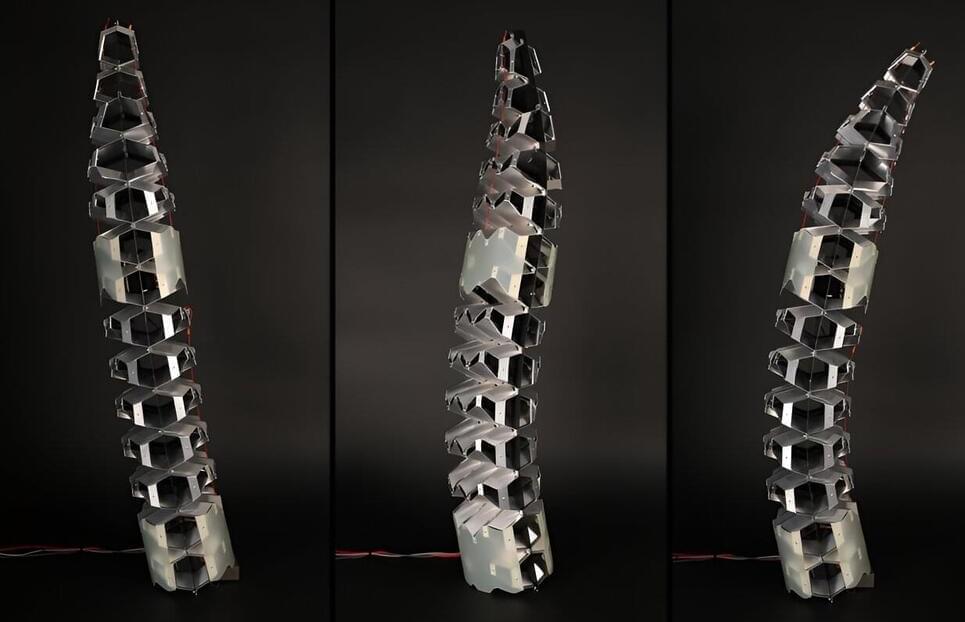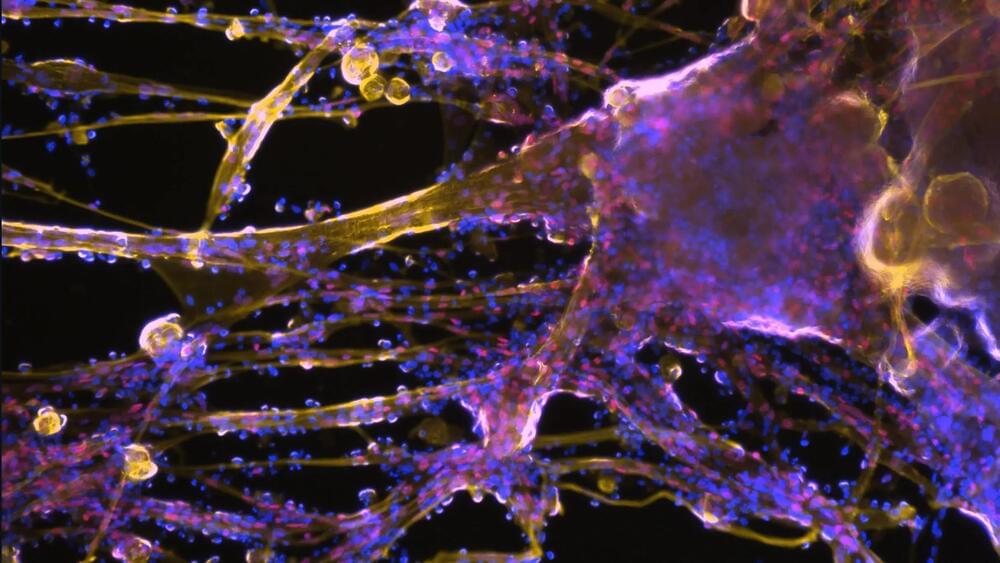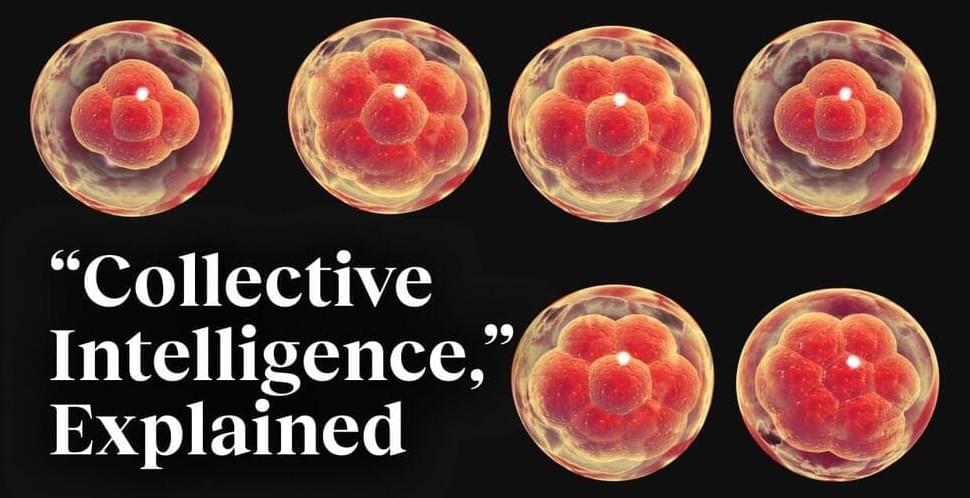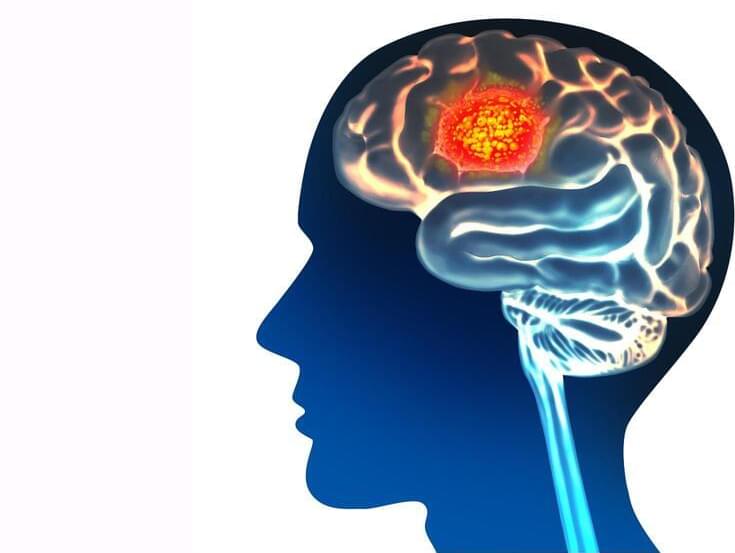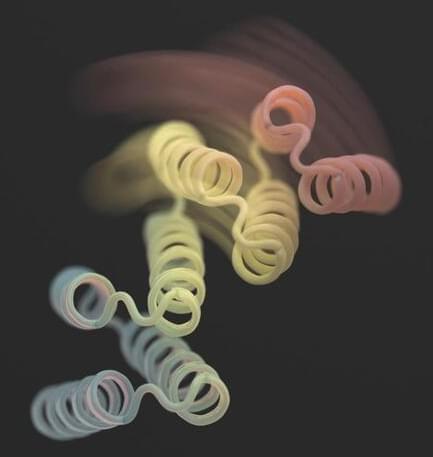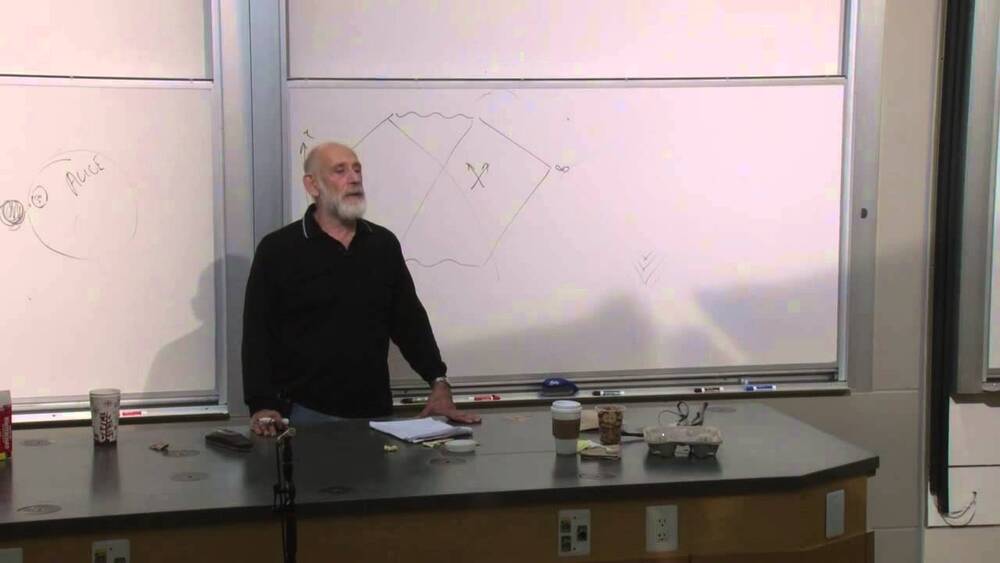Aug 22, 2023
Hydrogel locomotion regulated by light and electric fields
Posted by Saúl Morales Rodriguéz in categories: biotech/medical, cyborgs, robotics/AI
Materials scientists aim to develop autonomous materials that function beyond stimulus responsive actuation. In a new report in Science Advances, Yang Yang and a research team in the Center for Bioinspired Energy Science at the Northwestern University, U.S., developed photo-and electro-activated hydrogels to capture and deliver cargo and avoid obstacles on return.
To accomplish this, they used two spiropyran monomers (photoswitchable materials) in the hydrogel for photoregulated charge reversal and autonomous behaviors under a constant electric field. The photo/electro-active materials could autonomously perform tasks based on constant external stimuli to develop intelligent materials at the molecular scale.
Continue reading “Hydrogel locomotion regulated by light and electric fields” »
